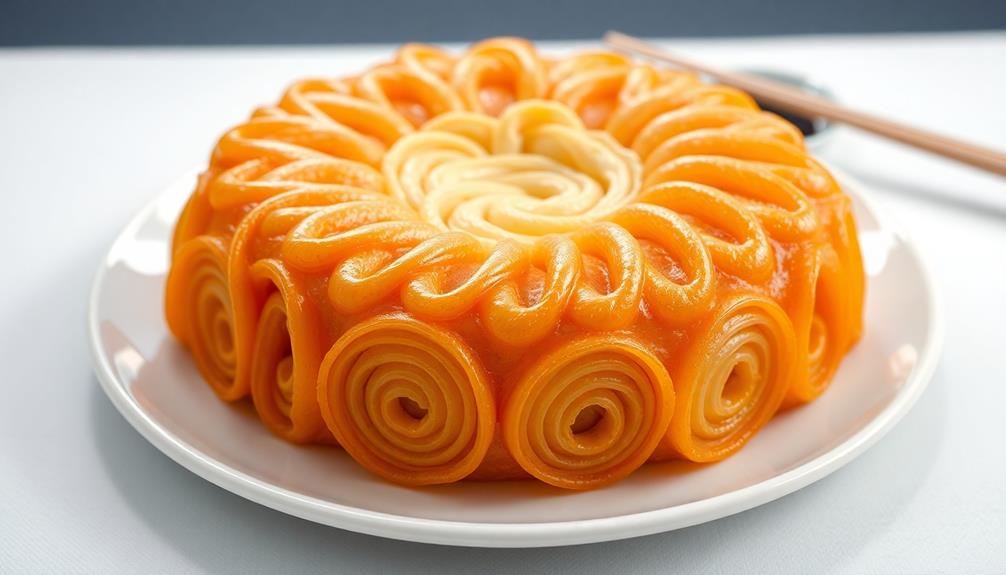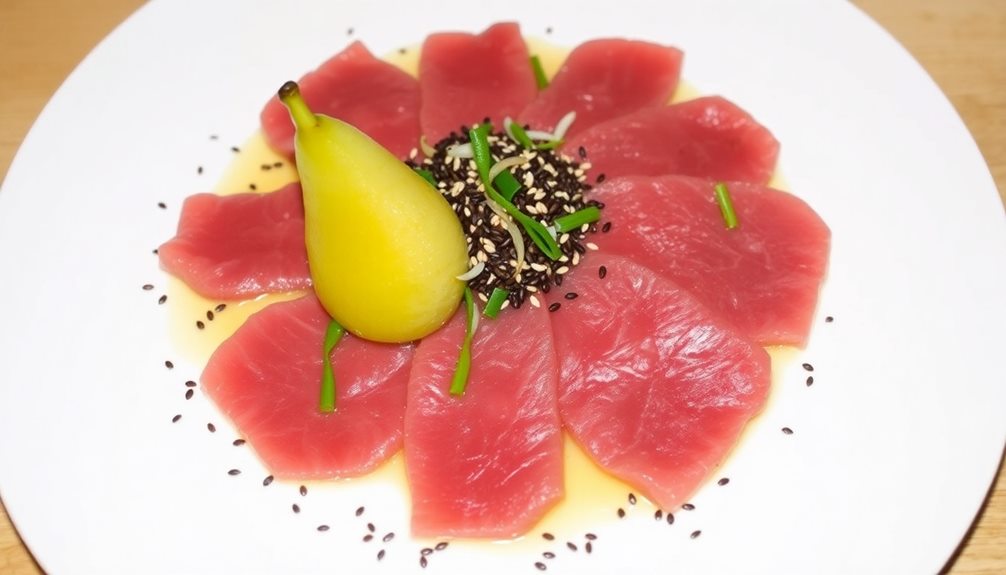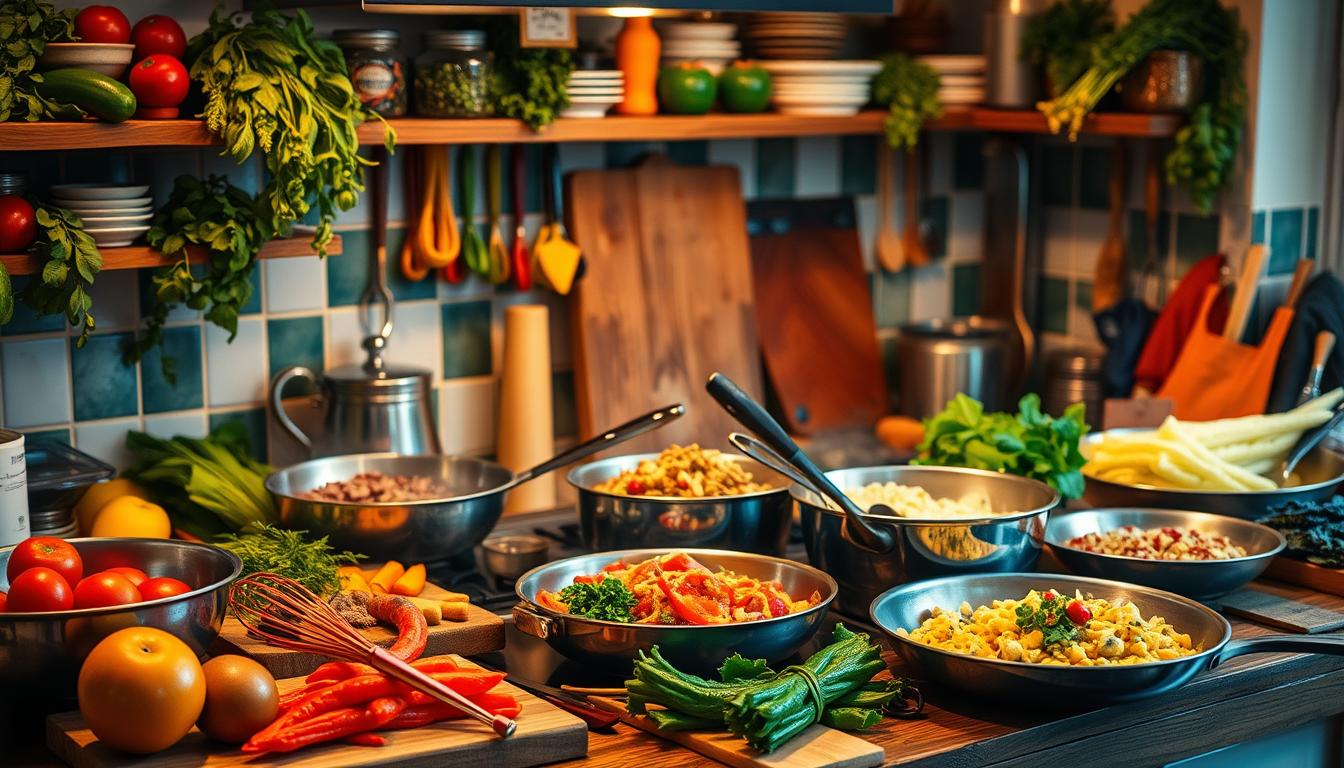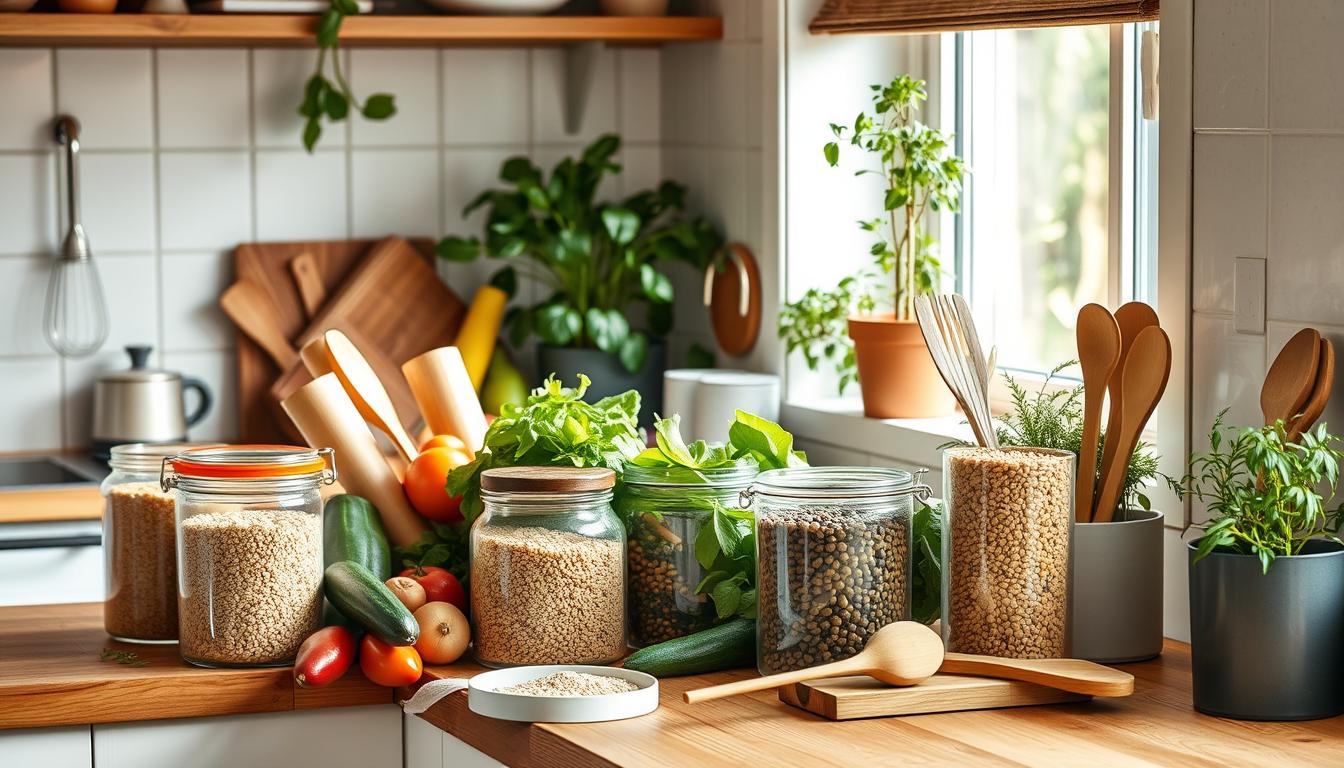Tamagoyaki, the Japanese rolled omelette, is a centuries-old culinary treasure that showcases Japanese artistry. It's a beloved breakfast and bento box favorite, known for its delicate sweetness and fluffy, layered texture. To make it, you'll whisk eggs until frothy, add savory-sweet seasonings, and carefully cook thin layers before expertly rolling them up – it takes practice, but the result is a visually stunning and delicious treat. Explore the fascinating history and techniques behind this iconic Japanese dish, and you'll discover why mastering the art of tamagoyaki is a rewarding culinary journey.
Key Takeaways
- Tamagoyaki is a traditional Japanese rolled omelette characterized by its delicate, sweetened layers and fluffy yet firm texture.
- The dish's preparation requires carefully controlled temperature and a specialized rolling technique to achieve its signature layered appearance.
- Tamagoyaki has a long history in Japanese cuisine and is traditionally served at formal tea ceremonies, showcasing the chef's culinary artistry.
- Unique flavor profiles and presentation make tamagoyaki a versatile dish suitable for any meal, with the potential for various customizations and ingredient combinations.
- Mastering the art of tamagoyaki requires patience and continuous practice, as each attempt provides an opportunity for improvement and the satisfaction of a homemade creation.
History
Tracing the origins of Japanese tamagoyaki, this delicate and savory rolled omelet dates back centuries, with its roots firmly planted in the culinary traditions of Japan.
Emerging from the country's vibrant food culture, tamagoyaki has evolved over time, reflecting the ingenuity and artistry of Japanese cooks.
In the past, this dish was often served at formal tea ceremonies, showcasing the chef's mastery of technique. Each carefully rolled layer adds depth and complexity, creating a harmonious blend of flavors and textures.
Over the centuries, the preparation of tamagoyaki has been refined, with home cooks and professional chefs alike perfecting the art of gently rolling the eggs to achieve the signature layered appearance.
Today, tamagoyaki remains a beloved staple in Japanese cuisine, enjoyed for its delicate sweetness and unique presentation.
Whether savored on its own or incorporated into various dishes, this iconic rolled omelet continues to captivate and delight those who appreciate the art of traditional Japanese cooking.
Recipe
Tamagoyaki, or Japanese rolled omelette, is a beloved breakfast and bento box staple in Japan. The delicate layers of sweetened egg create a unique and satisfying texture that's both fluffy and slightly firm. Mastering the art of Tamagoyaki takes practice, but with the right technique, you can recreate this traditional dish in your own kitchen.
The key to achieving the signature layered appearance is to cook the egg in multiple thin layers, gently rolling the omelette as you go. This process may seem daunting at first, but the result is well worth the effort, as the layered effect not only looks beautiful but also enhances the flavour and mouthfeel of the dish.
- 4 large eggs
- 1 tablespoon dashi stock or water
- 1 tablespoon mirin
- 1 tablespoon soy sauce
- 1 teaspoon sugar
- Pinch of salt
In a small bowl, whisk together the eggs, dashi stock (or water), mirin, soy sauce, sugar, and salt until well combined.
Heat a small, rectangular omelette pan or tamagoyaki pan over medium heat and lightly grease the surface. Pour in a thin layer of the egg mixture and cook until just set, then gently roll the omelette towards you.
Pour another thin layer of egg onto the pan and continue rolling the omelette, repeating this process until all the egg mixture has been used. Slice the Tamagoyaki into desired portions and serve warm.
To ensure your Tamagoyaki turns out perfectly, be sure to use a pan with straight, slightly sloped sides to facilitate the rolling process.
Additionally, adjust the heat as needed to prevent the egg from overcooking or burning. With a little practice, you'll be able to create beautifully layered and delicious Tamagoyaki right in your own kitchen.
Cooking Steps
Crack and beat those eggs until they're nice and frothy.
Stir in some dashi stock, soy sauce, and a touch of sugar to get that perfect savory-sweet flavor.
Now, it's time to carefully roll up that omelette, cooking it on both sides for a beautifully layered tamagoyaki.
Step 1. Crack and Beat the Eggs

To begin, crack the eggs into a mixing bowl. You'll want to use fresh, high-quality eggs for the best results. Gently tap the eggs against the side of the bowl, then use your fingers to separate the shells and let the egg whites and yolks fall into the bowl. Be careful not to let any bits of shell drop in.
Now, it's time to beat the eggs. Using a pair of chopsticks or a small whisk, vigorously whisk the eggs until they're fully combined and the mixture is smooth and uniform. You don't want to see any streaks of yolk or white – the goal is a homogeneous, golden-yellow liquid.
As you whisk, try to incorporate a bit of air into the eggs. This will help create the light, fluffy texture you're going for in the final tamagoyaki.
Keep whisking until the eggs have a slightly frothy appearance on top.
Step 2. Add Dashi Stock
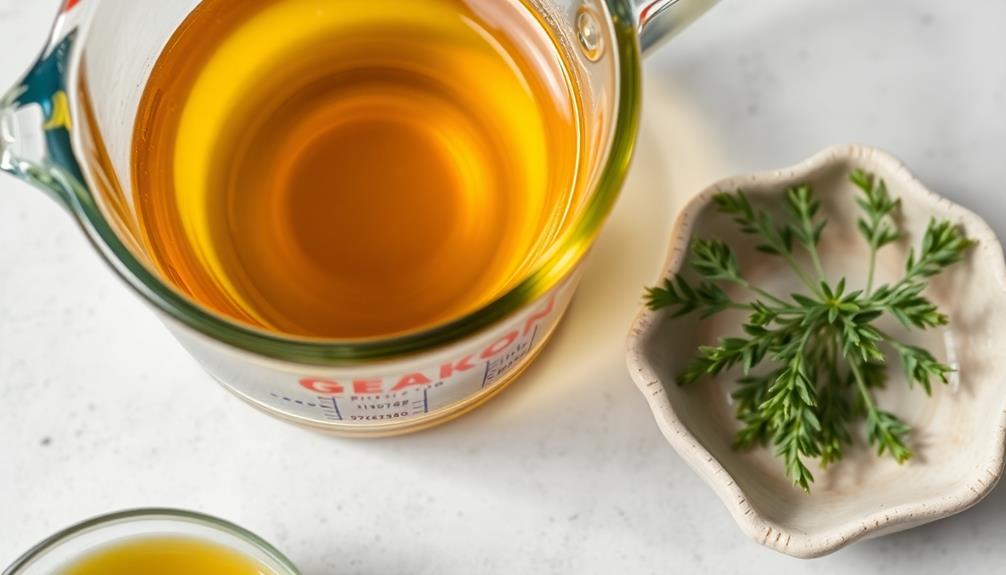
Next, add a bit of dashi stock to the beaten eggs. Dashi is a savory Japanese broth made from dried kelp and dried bonito flakes. It adds a wonderful umami flavor to the tamagoyaki.
Simply pour in a small amount of dashi, just enough to thin out the egg mixture slightly. This will help the eggs cook evenly and give them a delicate, silky texture.
Stir the dashi into the eggs until it's fully incorporated. You want the mixture to be smooth and pourable, but not too thin. This delicate balance is key to achieving the perfect tamagoyaki.
The dashi enhances the eggy flavor without overpowering it. It also helps the eggs roll up neatly into that signature layered rectangle shape.
Be sure to taste the egg mixture at this stage and adjust the seasoning as needed. Add a pinch of salt if necessary to balance the savory dashi.
Now you're ready to start cooking your tamagoyaki!
Step 3. Add Soy Sauce and Sugar

Adding a touch of soy sauce and sugar to the egg mixture is crucial for achieving the signature flavor and sheen of authentic tamagoyaki. The soy sauce adds a savory umami note, while the sugar balances the richness of the eggs with a subtle sweetness.
Be sure to use just the right amount – too much and the flavors will be overpowering, but too little won't give you that perfect tamagoyaki taste.
Gently whisk the soy sauce and sugar into the beaten eggs until they're fully incorporated. You want the mixture to be smooth and uniform, with no clumps of undissolved sugar. The soy sauce will also help to deepen the color of the cooked omelette, giving it that beautiful golden-brown hue.
As you roll the tamagoyaki, the soy sauce and sugar will continue to caramelize, creating a glistening, almost lacquered appearance on the surface of the omelette.
Each slice will be a delightful burst of sweet and savory flavors, making this traditional Japanese dish truly irresistible. The delicate balance of tastes will leave your palate craving more, as the freshness of the ingredients blends seamlessly with a hint of umami. Recently, food enthusiasts have embraced the sushi burrito fusion trend, where traditional sushi rolls are reinvented into larger, burrito-like servings. This inventive twist allows for even more creative combinations of flavors, while staying true to the essence of Japanese cuisine.
Step 4. Roll the Omelette Carefully

With the egg mixture seasoned to perfection, it's time to carefully roll the tamagoyaki.
Grab your wooden or silicone rolling mat and place it in front of you. Gently pour a thin layer of the egg mixture onto the mat, spreading it evenly from one end to the other.
As the egg starts to set, use your chopsticks or a small spatula to carefully roll the omelette into a tight cylinder. Don't worry if it's not perfect – the key is to roll it up slowly and steadily.
Once you've reached the end, use the mat to help you roll the tamagoyaki into a neat package.
Repeat this process, pouring more egg mixture and rolling it up, until you've used all the egg. The result should be a beautifully layered, compact roll.
Take your time and be gentle – the secret to a delicious tamagoyaki is in the careful rolling.
Step 5. Cook on Both Sides

Once the tamagoyaki is rolled up, you'll want to cook it on both sides to achieve that signature golden-brown color and custard-like texture.
Heat a clean, non-stick pan over medium heat. Gently place the rolled omelette seam-side down in the pan. Cook for 1-2 minutes until the bottom is lightly browned.
Carefully flip the roll using chopsticks or a spatula. Cook the other side for another 1-2 minutes until golden-brown.
Don't worry if the edges look a bit ragged – that's all part of the charm! The key is to cook it evenly on both sides to get that lovely caramelized crust.
Once both sides are cooked, you can remove the tamagoyaki from the pan and slice it into bite-sized pieces.
The slices will reveal the beautiful layers of egg inside. Serve the tamagoyaki warm, perhaps alongside some soy sauce or other dipping sauces for extra flavor. Enjoy this delightful Japanese delicacy!
Final Thoughts
Ultimately, tamagoyaki is a delightful Japanese omelette that rewards patient practice. Once you've mastered the rolling technique, you'll be able to create these fluffy, layered delights with ease. The sweet, savory flavour is truly unique and will impress your friends and family.
Don't be discouraged if your first few attempts don't turn out perfectly. Tamagoyaki takes time to perfect, but the satisfaction of slicing into your own homemade creation is worth the effort. Remember, practice makes perfect! With each batch, you'll get better at controlling the temperature, rolling the omelette, and achieving those distinctive layers.
The beauty of tamagoyaki lies in its simplicity. All you need are a few basic ingredients and the right tools.
Once you have the technique down, you can experiment with different flavour combinations to make it your own. Enjoy the process of mastering this classic Japanese dish – your taste buds will thank you!
Frequently Asked Questions
What Is the Origin of the Word "Tamagoyaki"?
You're curious about the origin of the word "tamagoyaki," aren't you? Well, it's a Japanese term that combines "tamago," meaning "egg," and "yaki," meaning "grilled" or "pan-fried." So, the word literally refers to a rolled omelette.
Can I Make Tamagoyaki Without a Special Pan?
You can make tamagoyaki without a special pan, but it'll be more challenging. Try using a square or rectangular nonstick skillet and rolling the cooked layers tightly as you go. It may take some practice, but you can still achieve that classic tamagoyaki look.
How Long Can Tamagoyaki Be Stored?
You can store tamagoyaki for up to 3 days in the refrigerator. Make sure to wrap it tightly in plastic wrap or place it in an airtight container to maintain its freshness.
Is Tamagoyaki Gluten-Free?
Yes, tamagoyaki is gluten-free. It's made with just eggs, dashi, and a bit of sugar and soy sauce, so there's no wheat or gluten-containing ingredients in the traditional recipe.
Can I Add Additional Ingredients to Tamagoyaki?
You certainly can add additional ingredients to tamagoyaki. Feel free to experiment with ingredients like vegetables, meats, or cheese to customize the flavor and texture of your rolled omelette.
